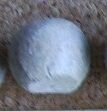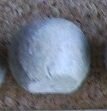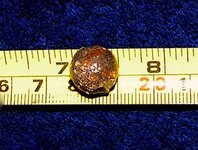cole1
Jr. Member
Hi Everyone,
We have been clearing out that mid 1700's stone foundation and have found a bunch of stuff this past week. I think these or at least one is a musket ball and the other looks more like a bead. It has holes on both ends and some sitration markings on one end. Any ideas?



We have been clearing out that mid 1700's stone foundation and have found a bunch of stuff this past week. I think these or at least one is a musket ball and the other looks more like a bead. It has holes on both ends and some sitration markings on one end. Any ideas?
















